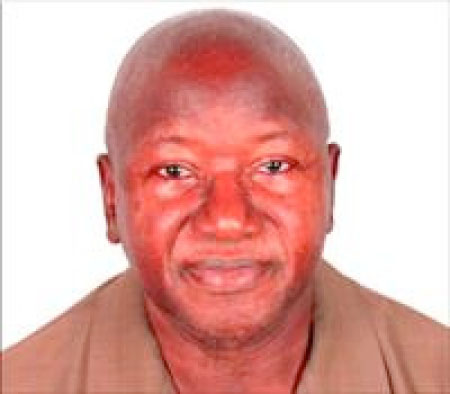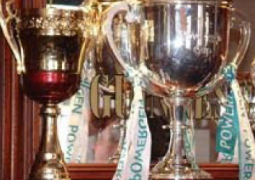
The
1994 Coup and the Advent of the Military in Gambian Politics
The
banning of existing political parties following the military coup of 1994
marked the beginning of more than a two-decade long hiatus in free and fair
political activities in the country. Although two new parties were formed
shortly after the ban, notably the United Democratic Party and the National
Reconciliation Party (both emerged in 1996),it was not until the ban was lifted
in 2001 that other parties emerged, the National Democratic Action Movement
founded in 2001 and the Gambia Moral Congress in 2009, In spite of these
developments, the political landscape remained under the firm grip of the Armed
Forces Provisional Ruling Council (AFPRC) and its successor political party,
the Alliance for Patriotic Reorientation and Construction (APRC) formed in 1996
when the leaders of the military coup morphed themselves into ‘civilian politicians’. In anticipation of their active
involvement in politics, the former military leaders ensured that the ground
was well prepared for that purpose. The disarticulation of well-established
political parties after the coup in 1994 and the launch of the Gambia’s first
television service, which was used for the maximum exposure of the new rulers,
among other initiatives such as the identification of transitional development
projects, should be seen in that light. When the date was set for the post-coup
presidential election in 1996, the former junta leader and Presidential
candidate for APRC made effective use of the benefits of incumbency, and when
the official results of the election were released, they indicated that Yahya
Jammeh, the APRC candidate, received 55.77% of the 394,537 votes cast; the
UDP’s Ousainou Darboe came second with 35.84% followed by NRP’s Hamat Bah with
5.52% and Sidia Jatta of PDOIS with 2.87%.
With Jammeh and the APRC maintaining their predominance in every sphere of political activity in the country, the results of the next presidential election in 2001 mirrored the pattern of the outcome of the 1996 contest with Jammeh at the top of the pack of the presidential contestants having emerged with 52.84% of the votes cast, Darboe of the UDP 32.59%, Hamat Bah, NRP 7.78% and Sheriff Mustapha Dibba of the National Convention Party (NCP) with 3.77%. Darboe’s level of performance in 2001 was slightly below what he attained five years earlier, even though on this occasion he got the backing of the PPP and the Gambian Peoples Party of Assan Musa Camara both of which were in the difficult process of resurrecting their once vigorous forays into politics after the ban was lifted only a few months before the election.
Multiparty Coalitions and Segmentation 2006,
2011
In
2005, following the lifting of the ban on pre-coup political parties a few
years earlier, opposition parties in the country took a major step to form a
broad-based coalition of five parties, called the National Alliance for
Democracy and Development (NADD) in order to mount a credible and rigorous
challenge to the incumbent, Yahya Jammeh of the APRC for the 2006 presidential
election. The constituent parties of the coalition included the People’s
Democratic Organisation for Independence and Socialism (PDOIS), the People’s
Progressive Party (PPP), the United Democratic Party (UDP) the National
Democratic Action Movement (NDAM) and the National Reconciliation Party (NRP).
The formation of this alliance was greeted with great interest and anticipation
within the ranks of opposition supporters at home and abroad. Intriguingly,
however, some months passed after the official launch of the alliance without
any information as to who would head the new organization as flag bearer and
presidential candidate. As reports began to emerge on persistent discordance
among the constituent party leaders on the selection of a flag bearer, the
initial euphoria that greeted the creation of the alliance started to subside
dramatically. The general view was that
the leaders were more interested in power for themselves rather than focusing
on identifying and selecting a capable and credible leader who could pose a
robust challenge to the incumbent in the presidential election. The problems
came to a head when the leader of the UDP, Ousainou Darboe withdrew from the
alliance on the grounds that there were growing tensions within NADD, thus a
serious attempt at a coordinated opposition to the APRC regime was effectively
bollixed. Many observers, however, believed that Darboe decided to leave when
it became evident that he would not be the presidential candidate for the
election. As noted by the Commonwealth Observer team, which was in the country
for the election, “When it became clear that Mr Darboe would not be the NADD’s
choice as Presidential candidate for the 2006 Presidential Election he decided
to leave in February 2006, citing growing tensions within the NADD as his main
reason. Some observers have suggested that Mr Darboe may have felt that as the
leader of the largest opposition party he would stand a much better chance of
defeating the President than any of his colleagues in the coalition” (Report of
the Commonwealth Observer Group: The Gambia Presidential Election, 22 September
2006).
Finally
and to the chagrin of opposition supporters and sympathizers NADD’s rupture
under the weight of power seeking impulses, personality incompatibilities and
low-level commitment to core alliance objectives was complete when the group
split into two factions. Hamat Bah of the NRP also deserted NADD and joined
Ousainou Darboe in an alliance with Darboe as the presidential candidate, while
the remaining members of NADD stuck together and selected Halifa Sallah of
PDOIS as their presidential candidate. This split in the opposition set the
stage for a certain victory of the incumbent Yaya Jammeh. When the official
results were released they simply confirmed what many expected- a decisive
victory for the incumbent who polled 67.33% of the votes against approximately
32.67% for the two opposition contenders combined (26.69% for Darboe and about
6.0% for Sallah).
Five
years later and in preparation for the next presidential election in 2011, the
opposition remained unfettered and unworried about their dreary attempts at
unity and the resultant poor performance at the polls in 2006, and demonstrated
once more their inability to contain susceptibilities of some partners to
singularity and polarization. Again as the Point Newspaper reported (October
31, 2011) after weeks of talks among several political parties they failed to
produce agreement on who should lead a possible coalition. That deadlock due
largely to conflicting objectives among party leaders delivered the coup de
grace to another opportunity for a unified opposition to Yaya Jammeh’s regime.
Conflict of interests is a typical problem in inter-party collaborative
efforts, symptomatic of the unity versus identity crisis in coalition politics,
namely unity for a common purpose versus singular preoccupation with individual
party identity. As a result, Darboe of UDP went on his own as presidential
candidate thus preserving the identity of his party while four other parties
NRP, GPDP, NADD and PDOIS, committing themselves to the supremacy of unity over
individual party identity, formed a United Front coalition, with Hamat Bah as
the presidential candidate (Report of the Commonwealth Expert Team Gambia
Presidential Elections 24 November 2011).
The efforts of the four constituent parties of the United Front,
however, proved inadequate. As in 2006, the segmented opposition of 2011 handed
the incumbent candidate, Yahya Jammeh, yet another predictable and easy
victory, winning re-election by 71.5% against less than 30% for both Darboe of
the UDP (17.4%) and Bah of the United
Front (11.1%).
Coalition 2016: Triumph, Strife and Implosion
The
December 2016 presidential election represented a watershed moment in the
history of party politics in the Gambia: Seven political parties under the
banner of Coalition 2016 stood firmly together, harmoniously selected a flag
bearer (in the person Adama Barrow as the non-party affiliated independent
presidential candidate) and campaigned vigorously together to successfully
topple an entrenched incumbent in the presidential election of December 1,
2016. The official results showed that on the basis of the plurality voting
system, Adama Barrow, the Coalition 2016 candidate came on top with 43.3%, the
incumbent Yahya Jammeh 39.6% and Mama Kandeh of the Gambia Democratic Congress
17.1% of the total valid votes of 525,963.
Without a doubt, an unusual concatenation of circumstances must have
accounted for this historic achievement of Gambian political parties working
together as a single agent in a presidential election. Among the likely factors
that accounted for the unexpected but highly welcomed development may include
the following: The growing disenchantment with the Yahya Jammeh regime which
created a favorable environment for unified opposition challenge to the regime;
the sustained pressure exerted by Diaspora activists including opposition
donors for the opposition parties to unite in order to have a reasonable chance
of defeating Jammeh; perhaps a “failure fatigue” on the part of the opposition
arising from their record of defeats by Jammeh due to the recurrent
fragmentation in their ranks and were now ready to put that record behind them
and forge a truly united front- in other words, past failures underpinning
fresh determination; and finally, what some observers describe as the “absence
of Darboe factor”. This has to do with the fact that Ousainou Darboe , leader
of UDP did not personally participate in the negotiations for forming Coalition
2016 and the selection of its flag bearer. At the time of the formation of the
coalition and selection of a flag bearer,
Darboe was serving a prison
sentence following his trial along with other UDP leaders for peacefully
demonstrating in the wake of the arrest, torture and eventual death of a key militant of the
UDP, Solo Sandeng. It was generally believed among observers that Darboe, as
the leader of the largest opposition party had in the past felt that he would
stand a much better chance of defeating the incumbent President than any of his
colleagues, an attitude said to have contributed to gridlock, virtual paralysis
and defeats for the opposition in 2006 and 2011, In the study of coalitions,
the past behavior of a political party toward partnering with other parties
could be a useful guide to understanding the position it might adopt in future
negotiations on partnership formation (Margit Tavits, “The Role of Parties’
Past Behavior in Coalition Formation”, The American Political Science Review,
Vol. 102, No. 4 Nov., 2008)
K.M. Bayo
To be continued


